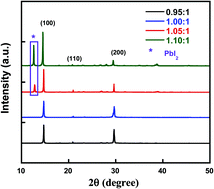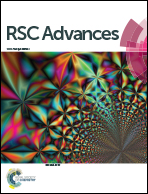Highly crystalline CsPbI2Br films for efficient perovskite solar cells via compositional engineering
Abstract
All-inorganic CsPbI2Br shows high thermal stability for promising application in perovskite solar cells (PSCs). The performance of PSCs is significantly affected by their morphology and crystallinity induced by compositional ratio, solvent/anti-solvent engineering and post thermal annealing. In this study, the compositional ratio effect of two precursors, PbI2 and CsBr, on the power conversion efficiency (PCE) of a device with ITO/SnO2/CsPbI2Br/Spiro-MeOTAD/Au structure was investigated. With the assistance of anti-solvent chlorobenzene, perovskite with a PbI2 : CsBr ratio of 1.05 : 1 showed a high quality thin film with higher crystallinity and larger grain size. In addition, the molar ratio of precursors PbI2 and CsBr improved the PCE of the PSCs, and the PSCs fabricated using the perovskite with an optimal ratio of PbI2 and CsBr exhibited a PCE of 13.34%.



 Please wait while we load your content...
Please wait while we load your content...